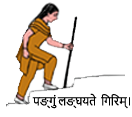Joints are formed where two bones unite. There are over 200 joints in our body. Various movements in different directions are possible because of joints in limbs, the spine, and other areas. A capsule surrounds the bone ends of a joint. The joint capsule is a dense fibrous structure reinforced by tendons and ligaments and is attached to bones. It limits joint movements and provides stability to the joint. The joint cavity is lined by cartilage over bones and synovium over the rest of the part. Cartilage is a resilient spongy structure that covers bone ends to bear weight and avoid friction. It has no blood vessels or nerves and is insensitive to pain. It derives nutrition from synovial fluid in the joint cavity. Synovial membrane lines the rest of the joint and has a rich supply of blood vessels and nerves. Synovial cells secrete viscous fluid that lubricates the joint and provides nutrition. Knee, the largest joint, typically consists of just half a milliliter of synovial fluid that forms a thin film covering the articular surfaces. Various joint structures, including associated muscles, tendons, and ligaments, function as a single unit. Damage to cartilage in osteoarthritis causes pain in joints, weakens the joint, and ultimately leads to joint failure. Synovial membrane swells and pours excess synovial fluid leading to joint swelling and pain in rheumatoid arthritis.
